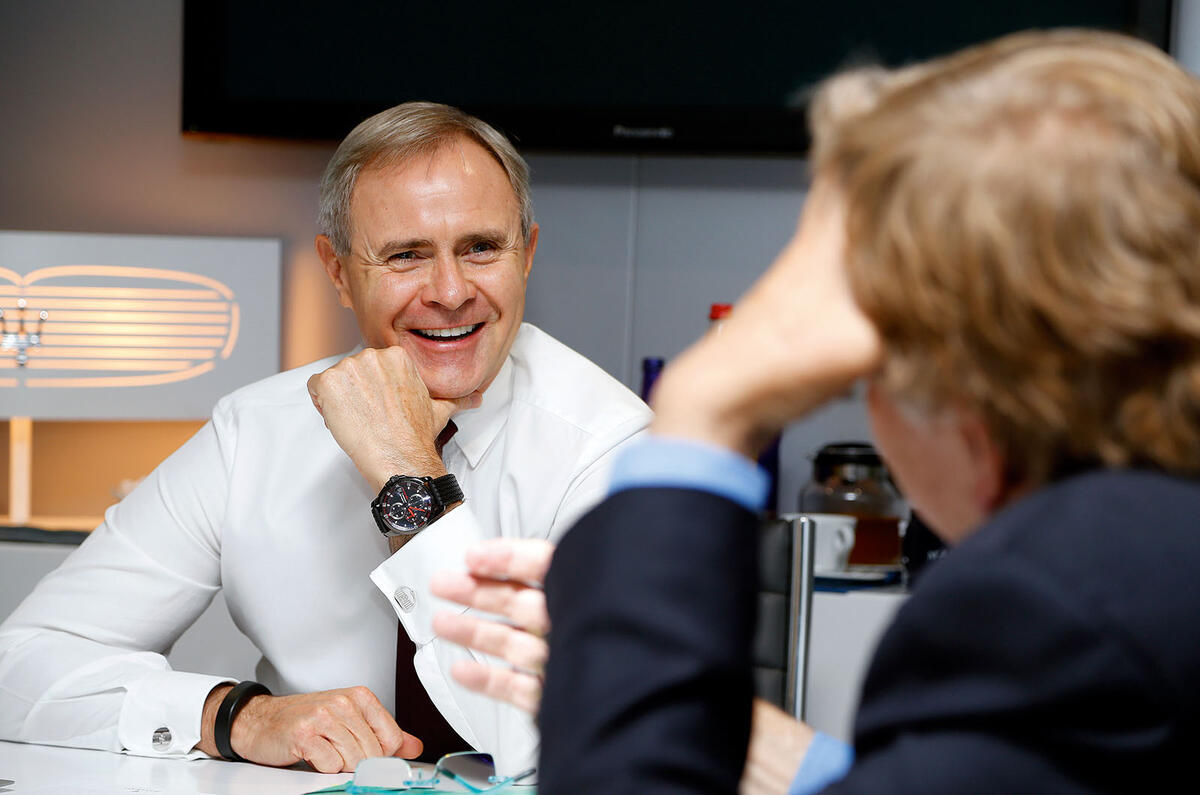For a moment it seems Harald J Wester, Alfa Romeo CEO since 2010, is about to break the habit of a lifetime and reveal that bit too much about his company’s future.
This is not usual. German-born Wester spent the first 14 years of his career as a young mechanical engineer rising rapidly through the ranks of the monolithic Volkswagen Group – where only those expressly authorised are free to speak in public – so he hardly ever utters a word out of place, even in his second language.
We’re discussing Alfa’s much-publicised expansion plan, announced last summer in Milan, to use eight new models and a much-delayed US launch to boost volume from last year’s sub-80,000 units to 400,000 in 2018 – and as an outsider, aware of the firm’s ropey record on expansions, I can’t resist saying it looks a scarily steep mountain to climb.
Read Andrew Frankel on the Alfa Romeo 75 and original Giulia
Wester is as reasonable and softly spoken as any country vicar, but you can tell that after 15 months of justifying the recovery plan, he’s a little fed up with having to rationalise the validity of his task, especially when the interviewer poses the obvious supplementary: if you couldn’t succeed before, how can you succeed now?
“Look,” he says, with an edge of exasperation, “a volume around 400,000 for all those new models won’t even be a particularly big success for Alfa. Some would say it represents too much new product for too little volume. In the second generation, an investor would probably expect sales to go significantly beyond those numbers.”
How big could Alfa become?
For a second, there’s a hint of an open goal: how much Alfa volume might the investor foresee? How about 600,000? In my dreams, I’ll get a positive answer and an exclusive. The prospect of Alfa Romeo volume achieving viability is especially enticing to someone like me who has chronicled the company’s losses and failed recoveries for 40 years. But the glimpse of a farther future goes in a flash. “Our first job is to make a start,” he says with finality.
“An important part of our job is to make the existing Alfisti happy,” he acknowledges. “It is wonderful, knowing how many people have continued to support our brand in its bad years. But there are not enough of these people available to build a strong future. We have to find more customers, and the way to do that is by providing what they want. Fancy niche models will not contribute very much to our stability.” He does not say “like the 4C” but it is clear this is what he’s thinking.
































Join the debate
Add your comment
Don't hold your breath!
Was the 159 all that bad?
I agree with the sentiments expresses thus far regarding the mito. The mini and a1 prove the formula works if properly executed, a grande punto robbed of its looks wasn't ever going to cut it.
Yes, that was a bit weird.
'the Punto-based Mito
Oh dear, and they are making a full sized saloon too?! Even if the Guilia is excellent, brand perception is at an all time low. No one buys the Mito because it's a stinker!!
Sam_notts wrote: No one buys
And if he's blind to something as obvious as that, it doesn't bode well for his perception of what the Alfa Romeo brand should be all about.